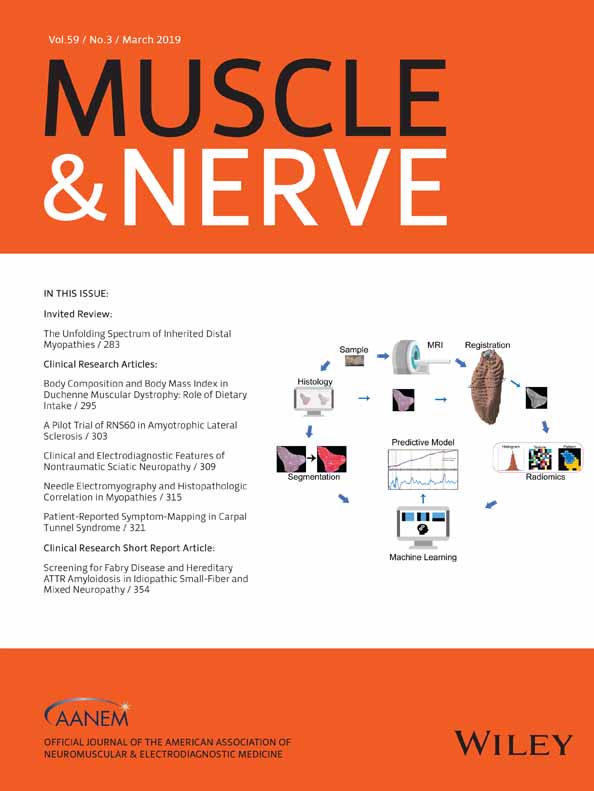Novel SPEG mutations in congenital myopathies: Genotype–phenotype correlations
Funding: For Patient 2, initial whole exome sequencing was funded by the Clinical Center Genomics Opportunity, which is sponsored by the National Human Genome Research Institute, the NIH Deputy Director for Intramural Research, and the NIH Clinical Center. Whole genome sequencing for the same patient was performed at the Broad Center for Mendelian Genomics (CMG) (UM1 HG008900), funded by the National Human Genome Research Institute with supplemental funding provided by the National Heart, Lung, and Blood Institute under the Trans-Omics for Precision Medicine program and the National Eye Institute. C.G.B. was supported by NIH Intramural Research Program funding from the National Institute of Neurological Disorders and Stroke. A.M.D. was supported by the National Institute of General Medical Sciences (T32GM007753). P.B.A. was supported by NIH/NIAMS 1R01AR068429-01.
Conflicts of Interest: None of the authors has any conflict of interest to disclose.
ABSTRACT
Introduction: Centronuclear myopathies (CNMs) are a subtype of congenital myopathies (CMs) characterized by muscle weakness, predominant type 1 fibers, and increased central nuclei. SPEG (striated preferentially expressed protein kinase) mutations have recently been identified in 7 CM patients (6 with CNMs). We report 2 additional patients with SPEG mutations expanding the phenotype and evaluate genotype–phenotype correlations associated with SPEG mutations.
Methods: Using whole exome/genome sequencing in CM families, we identified novel recessive SPEG mutations in 2 patients.
Results: Patient 1, with severe muscle weakness requiring respiratory support, dilated cardiomyopathy, ophthalmoplegia, and findings of nonspecific CM on muscle biopsy carried a homozygous SPEG mutation (p.Val3062del). Patient 2, with milder muscle weakness, ophthalmoplegia, and CNM carried compound heterozygous mutations (p.Leu728Argfs*82) and (p.Val2997Glyfs*52).
Conclusions: The 2 patients add insight into genotype–phenotype correlations of SPEG-associated CMs. Clinicians should consider evaluating a CM patient for SPEG mutations even in the absence of CNM features. Muscle Nerve 59:357–362, 2019




